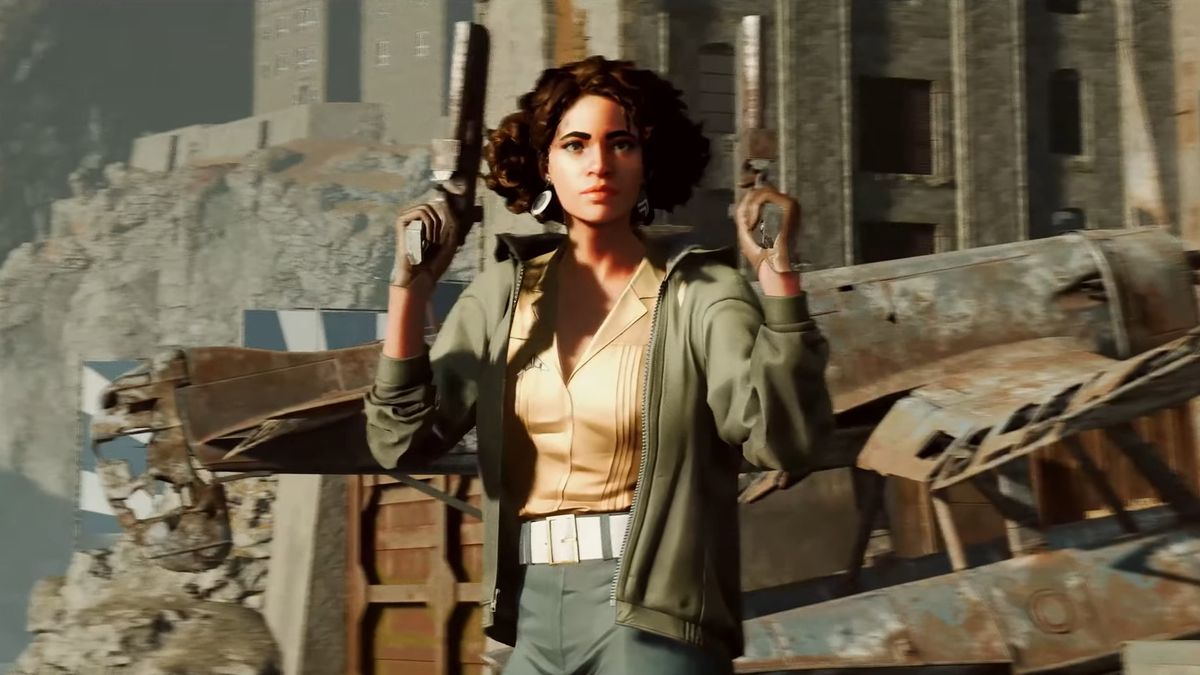How Deathloop's "murder puzzle" turns 4 levels into 16 using secrets you might not even find
Arkane tells Edge how Deathloop avoids repetition and invites players to experiment

Deathloop is an immersive-sim-infused first-person shooter with just four levels, but those spaces hide 16 variants filled with countless variables, as developer Arkane explains in the latest issue of Edge magazine.
Speaking in Edge 357, which you can subscribe to here, Arkane says the time loop that repeatedly puts protagonist Colt back at the start of the day is central to Deathloop, but so is the normal passage of time. There are four areas on the game's main island: Fristad Rock, Karl's Bay, Updaam, and the Complex. There are also four periods in each playable day: morning, noon, afternoon, and evening. Each area is not only home to different Visionaries, the eight targets Colt needs to kill to end the time loop, but will also change as the day goes on. This creates a morning, noon, afternoon, and evening variant of each of the four levels, and that's just the start of Deathloop's layered level design.
"There is one correct solution – there is one way to break the loop," campaign designer Dana Nightingale says of the "murder puzzle" that drives the player-made campaign. "But discovering it is not something you can do right off the bat."
Director Dinga Bakaba highlights one way that cumulative discoveries shape your decisions, and how those decisions in turn affect the events of the day. You might find a clue regarding a security code in one area during the morning, only to head to another area in the afternoon to collect the code. That's two time slots – half your day – spent on one piece of information. The security code itself will reset overnight, but next time you can head straight to the code's hiding place first thing, setting you up for an earlier infiltration.
In this way, gathering information the old-fashioned way is just as vital to progression as upgrading Colt's abilities (a process which is also smartly woven into the loop, as killing each Visionary will unlock or improve a specific power). In the absence of currency – which wouldn't be needed in a reality where tomorrow never comes – this turns time itself into a resource that can be spent on exploring, collecting intelligence, or simply amassing more power for your next gunfight. You have to decide how to spend each period of each day, and since you can always bet on a clean slate tomorrow, the ceiling for experimentation is sky-high.
"Certain [routes and activities] are open only in the morning and not in the afternoon, and others vice versa," explains art director Sébastien Mitton. "There are tides, as well, that give you access to some places at some moments during the day."
"There is a level of 'I'm not sure this thing should exist," Bakaba says of Deathloop's circuitous but ever-evolving level design. "But it does. And that's beautiful."
Sign up to the GamesRadar+ Newsletter
Weekly digests, tales from the communities you love, and more
To get this issue of Edge, which also includes an interview with legendary Final Fantasy creator Hironobu Sakaguchi, head to Magazines Direct, Apple App Store, Zinio, or PocketMags to pick up a physical or digital issue.

Austin has been a game journalist for 12 years, having freelanced for the likes of PC Gamer, Eurogamer, IGN, Sports Illustrated, and more while finishing his journalism degree. He's been with GamesRadar+ since 2019. They've yet to realize his position is a cover for his career-spanning Destiny column, and he's kept the ruse going with a lot of news and the occasional feature, all while playing as many roguelikes as possible.
Most Popular

